Improving Stablecoins with TapestryX NaL (Part3)
How TapestryX compares to traditional blockchain systems, highlight findings from the ISSA report, and explore the global regulatory landscape in more detail.
)
William Pallumbo
Deployment Manager - TapestryX
Introduction
How TapestryX compares to traditional blockchain systems, highlight findings from the ISSA report, and explore the global regulatory landscape in more detail.
TapestryX NAL vs DLTs w/ smart contracts
Current Blockchain Solutions
No Accounting
Time-stamped (state change log) transfers only
Continuous expanding active memory
No record of future obligations
Smart contracts used to record future obligations introduce significant operational and accounting challenges.
Latency – delay in settlement
Mining, Consensus or Validators
Limited Performance
Not Scalable
Finite or diminishing capacity
Limited to no interoperability with legacy infrastructure/other networks
Difficult adoption & transition
Customized (Unique Smart Contracts per use-case transaction)
Networked Accounting Ledger Technology (NAL)
Double-Entry Accounting
Transacting periods
Archived transaction periods
Future-dated obligations *
Accounting-format, reconcilable future obligations’ records for downstream G/L, Risk or Credit applications
Real-time
Self-synchronizing DLT *
High Performance
Linearly Scalable *
High-Capacity
Interoperable with Legacy Infrastructure or other networks
Implement at large or small scale
No-code, asset/life-cycle configurable *
*U.S. Pat. No. 11,631,063 B2
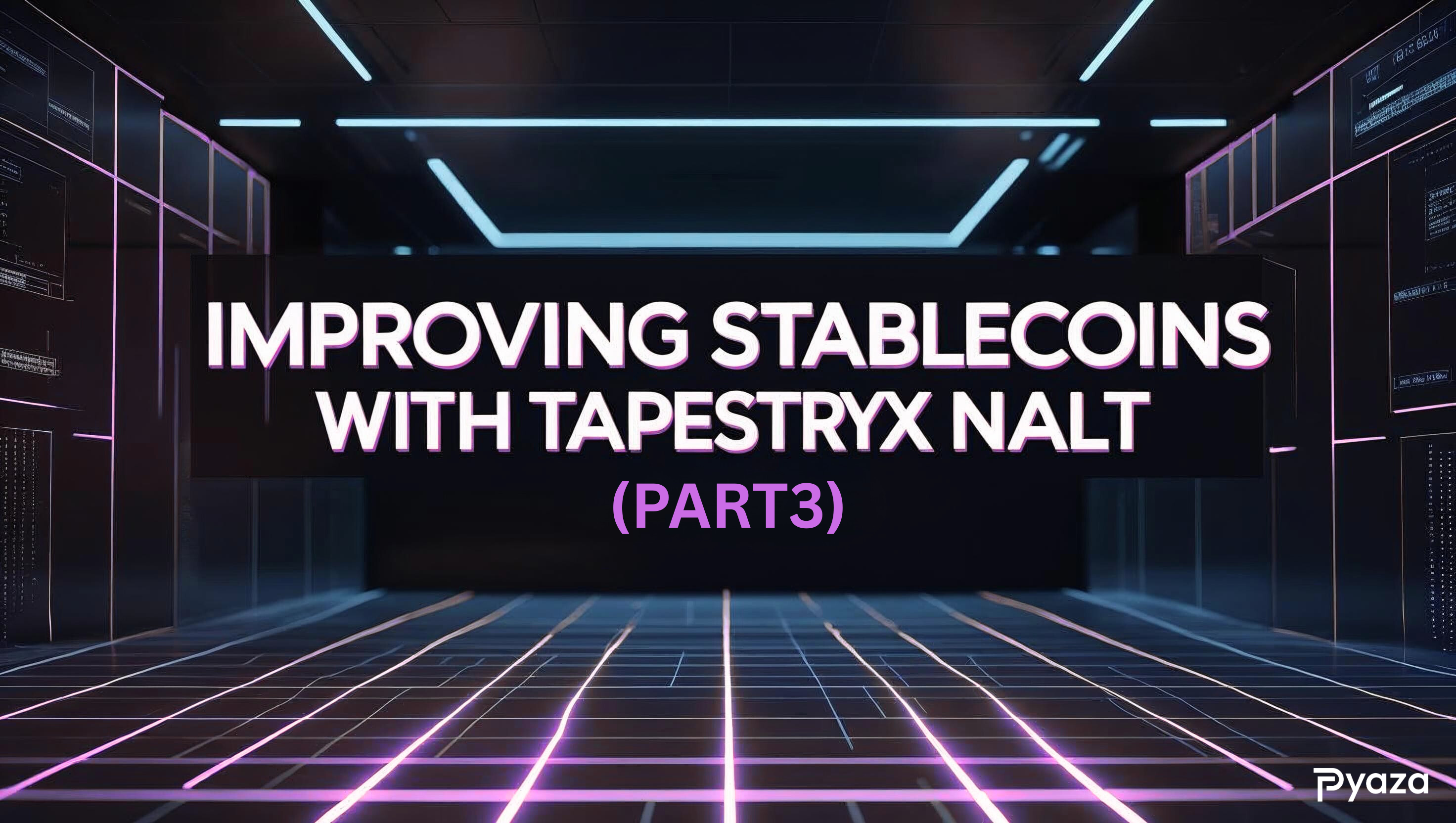
APPENDIX ISSA SLIDES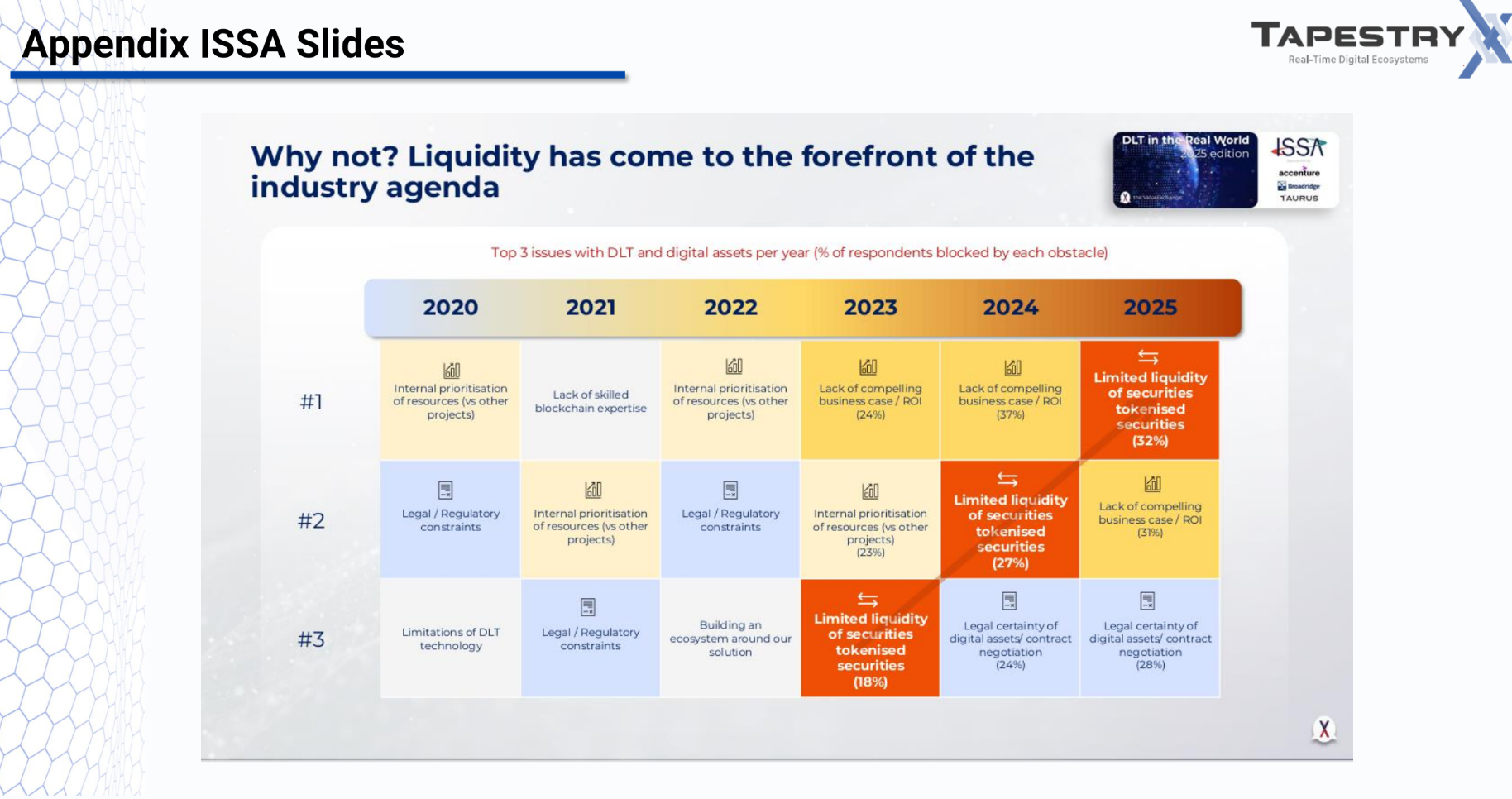
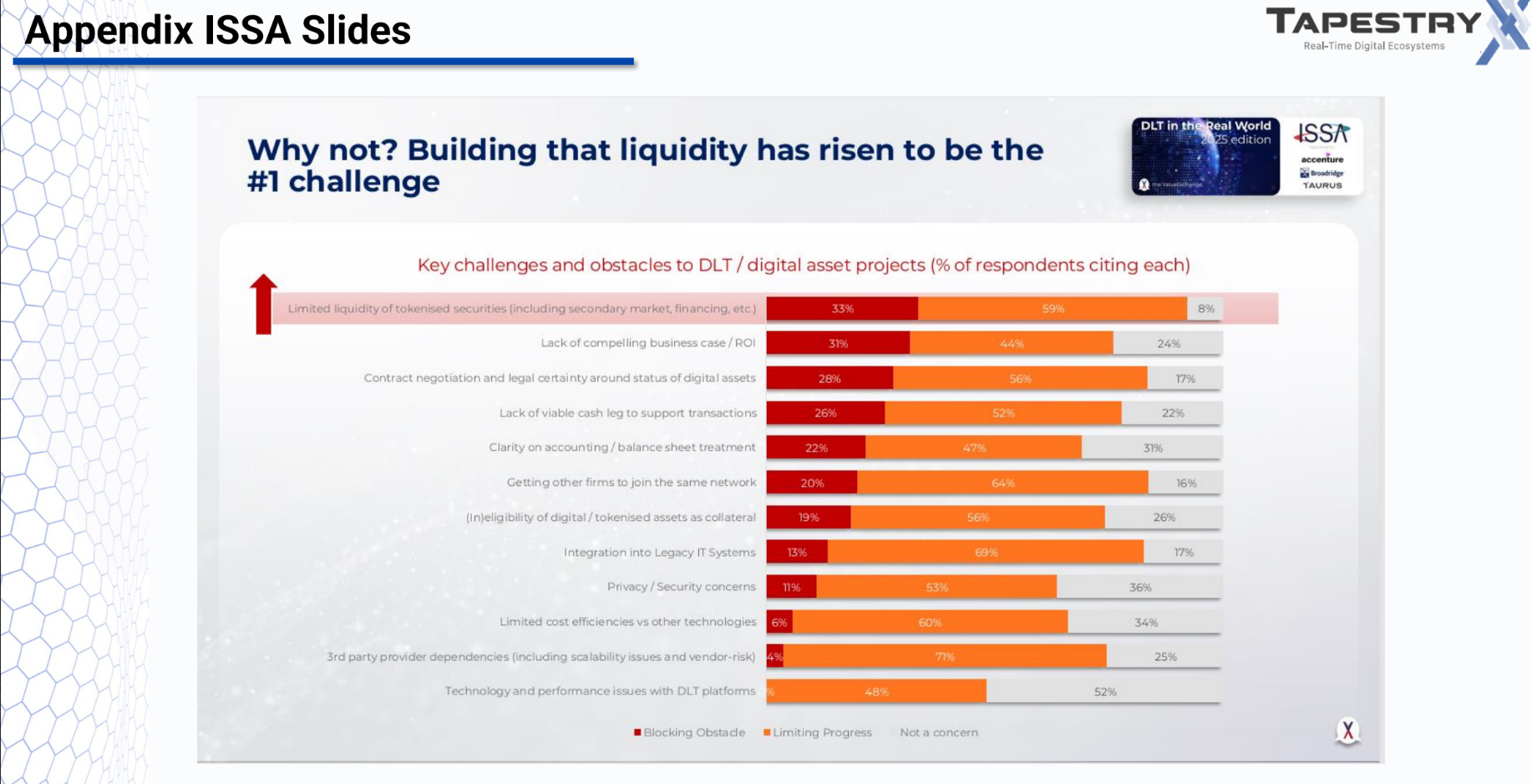
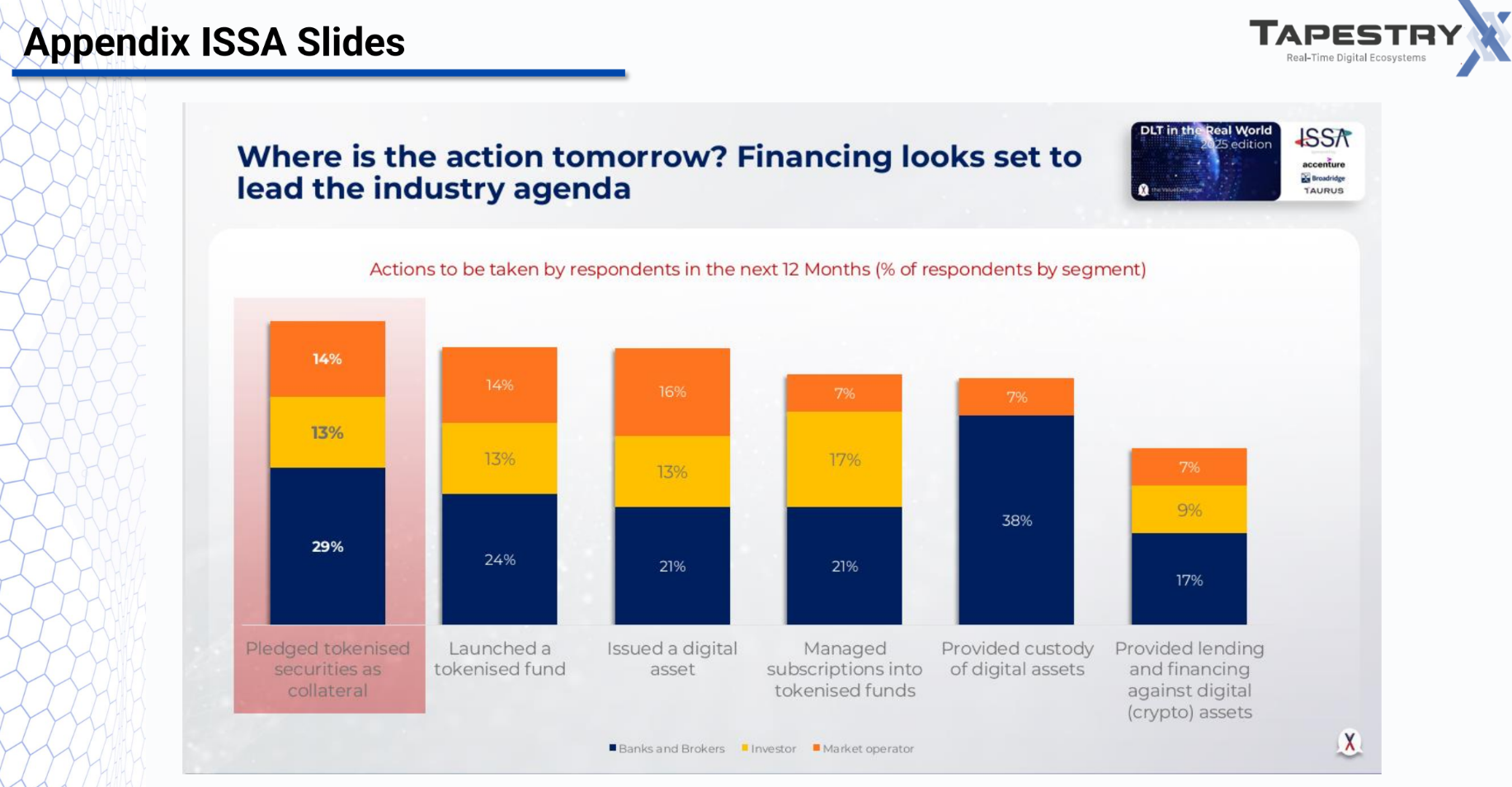
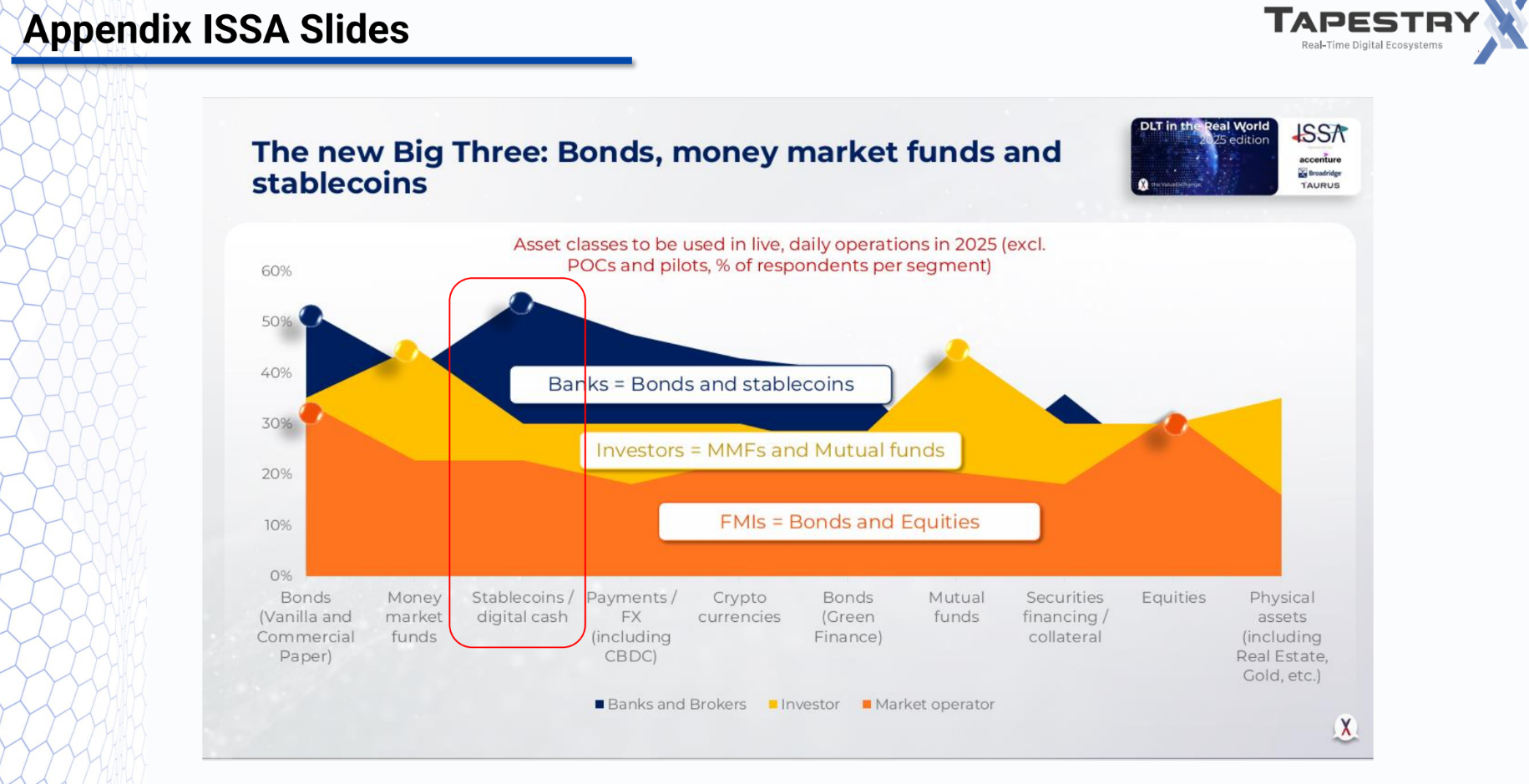
Regulatory Details
United States
Federal landscape
No unified “stablecoin law”; STABLE Act (House) and GENIUS Act (Senate) pending
Issuers rely on MSB/money-transmitter rules, Bank Secrecy Act, state-by-state licensing or bank charter
Key constraints
Only depository institutions can self-issue
Nonbank issuers must partner with banks or register as money transmitters (meeting reserve and audit obligations)
State regimes
New York BitLicense, Wyoming stablecoin law, etc.
1:1 reserve requirements, licensing fees, periodic audits, capital/insurance minimums
Varying rules on redemption rights, eligible collateral, permissible APYs
BIS Report: https://www.bis.org/publ/arpdf/ar2025e3.pdf
European Union (MiCA)
Effective June 2024 under Markets in Crypto-Assets Regulation
Issuer obligations
Maintain 1:1 High-Quality Liquid Asset reserves
Guarantee daily redemptions at face value
Obtain an “electronic money token” (EMT) license under the e-money directive
Ongoing duties
Monthly disclosures, strict AML/KYC, adverse-event reporting
Cross-border passporting across all 27 member states
United Kingdom
E-money treatment under FCA’s Electronic Money Institution (EMI) regime
Core requirements
Safeguard 100 percent of customer funds in ring-fenced accounts
Robust governance, conduct rules, and capital buffers
Innovation hub
Temporary registration with lighter touch
Caps on AUM and geographic reach
Singapore
Payment Services Act classifies stablecoins as “designated payment tokens”(DPTs)
Major Payment Institution lice nse
1:1 segregated reserves in MAS-licensed banks
Quarterly audits, stringent AML/CFT controls, local board representation
Regional access via APEC and ASEAN passporting agreements
Hong Kong
Stablecoin Bill (anticipated 2025)
Licensing via HKMA as a stored-value facility
Issuer duties
Reserve holdings in HQLA or on-demand bank deposits
HK$ redemptions within 24 hours
Monthly reports and independent proof-of-reserves
Switzerland
FINMA classification: stablecoins are “payment tokens”
Dual regimes
Payment system with multilateral settlement (for banking-level issuers)
Financial intermediary rules (lighter compliance, limited KYC/AML)
Reserves calibrated to expected daily transaction volumes
Cayman Islands
Virtual Asset Service Provider (VASP) Law
Issuer requirements
Register as a VASP, maintain 100 percent backing, annual audits
Capital buffer tied to a percentage of AUM
Redemption mechanism via contractual rights rather than on-shore guarantees
Dubai (DFSA)
Crypto Tokens regime (since 2024)
Tier 1 (banks, licensed custodians): unlimited issuance & market-making
Tier 2 (fintechs): issuance caps based on AUM
Both tiers require client asset segregation, 1:1 reserves, KYC/AML, monthly reporting
Bermuda
Digital Asset Business Act
Key rules
100 percent backing held in segregated trust accounts
Oversight as a trust company, quarterly attestations
On-chain proof-of-reserves
Malaysia
Securities Commission framework
Only licensed banks or approved e-wallet operators may issue
Must safeguard client funds, meet capital adequacy, conduct quarterly audits, and enforce KYC/AML
Interest on Stablecoins
General prohibition on paying interest/yield directly in the token to avoid securities classification
Permitted structures (some US states, Cayman)
Interest issued via separate contracts, no on-chain markup
Additional capital or surety to cover credit risk
Platform requirements
US: broker-dealer or securities registration
EU/HK: asset management or specific yield-product licensing
Transparency mandates: disclose NAV, lock-up periods, fees, counterparty exposures
DeFi-style permissionless yield remains off-limits in regulated frameworks
Looking Ahead: Key Developments to Watch
Global coordination on a unified stablecoin standard (BIS, FSB initiatives)
Regulatory clarity around algorithmic and crypto-collateralized stablecoins
Integration of programmable compliance features (on-chain audit trails, real-time reserve proofs)
Convergence between stablecoins and retail CBDCs for cross-border interoperability.
Download the Pyaza app to follow our coverage, connect with the team, and get involved in upcoming creator campaigns.